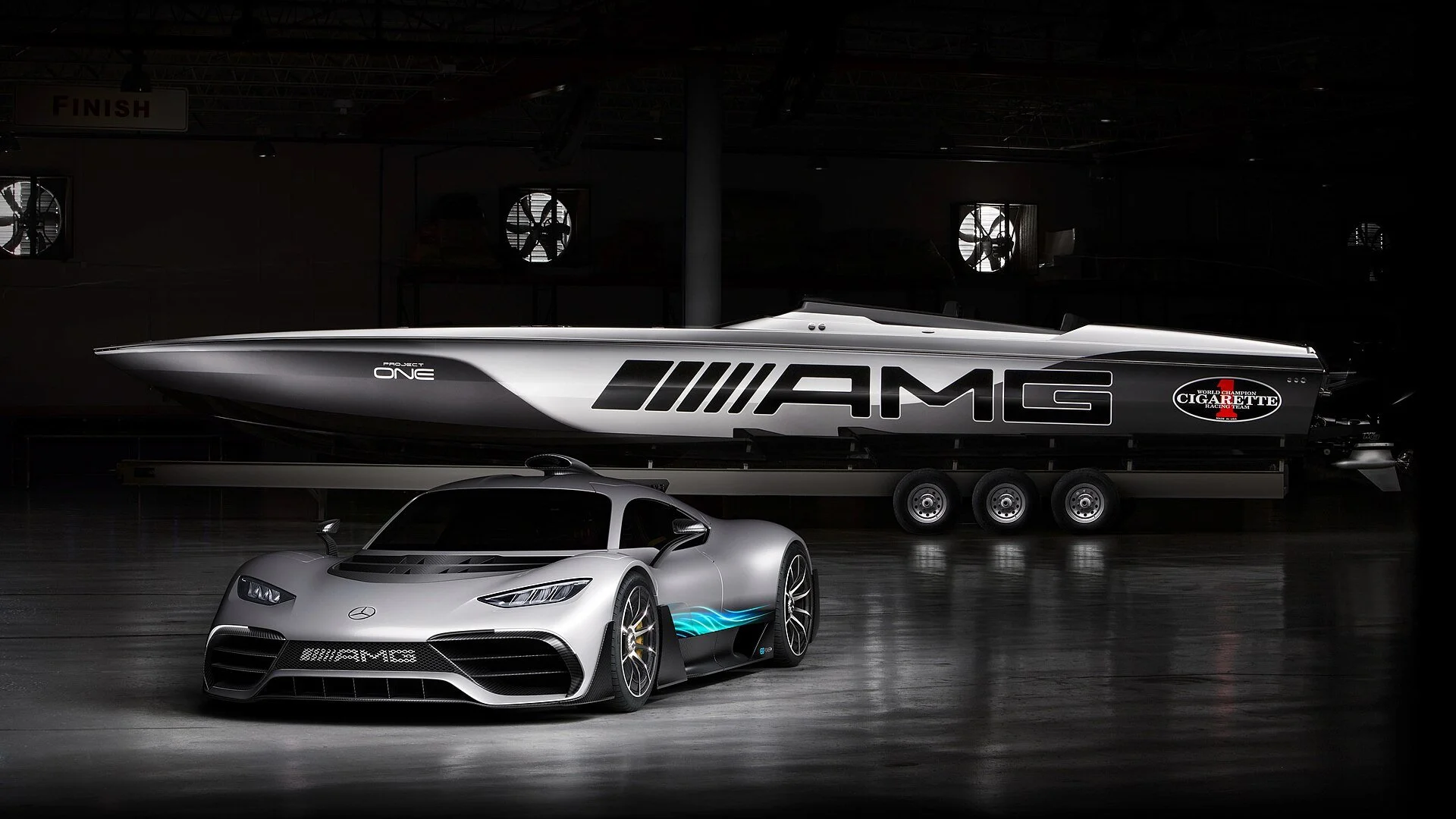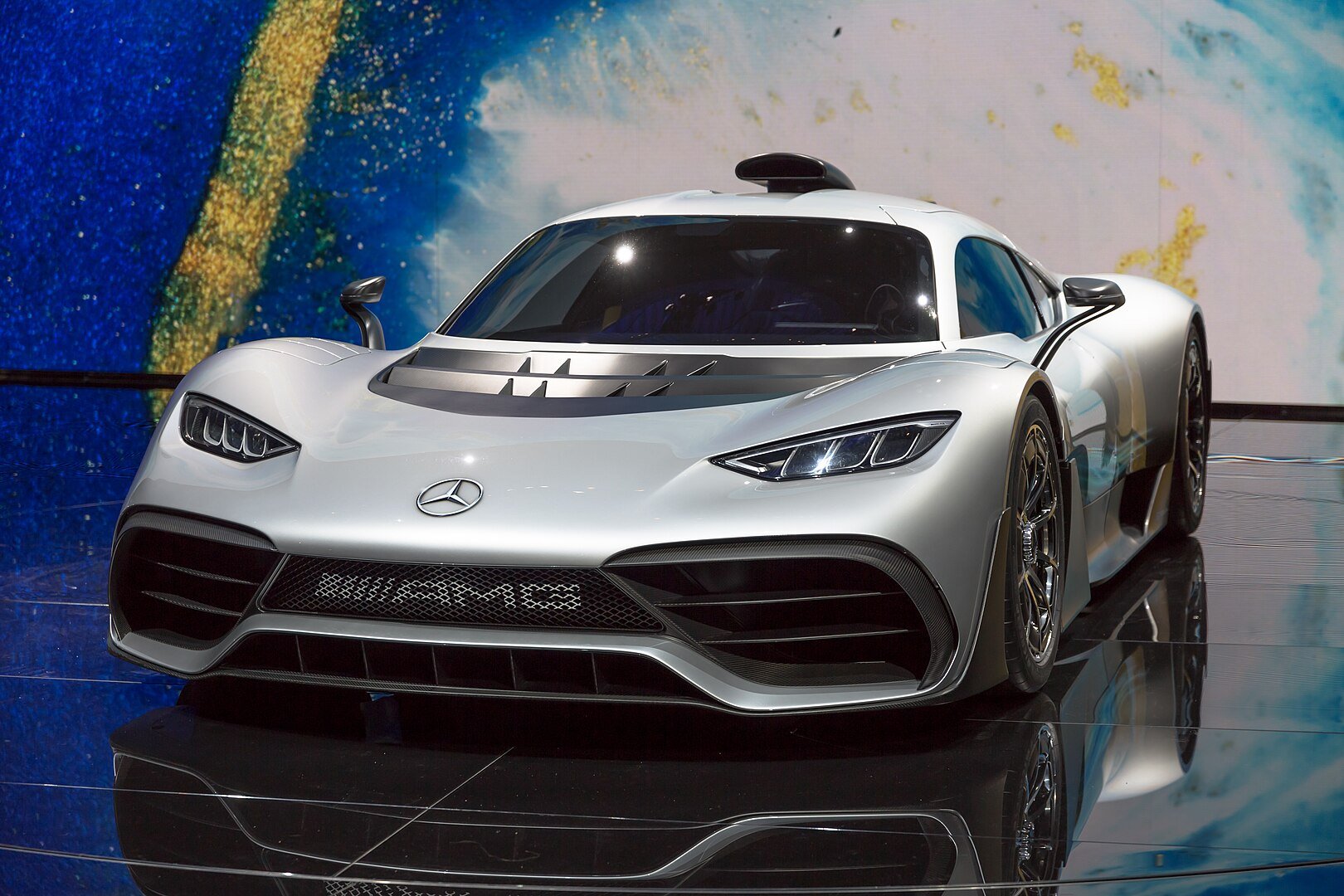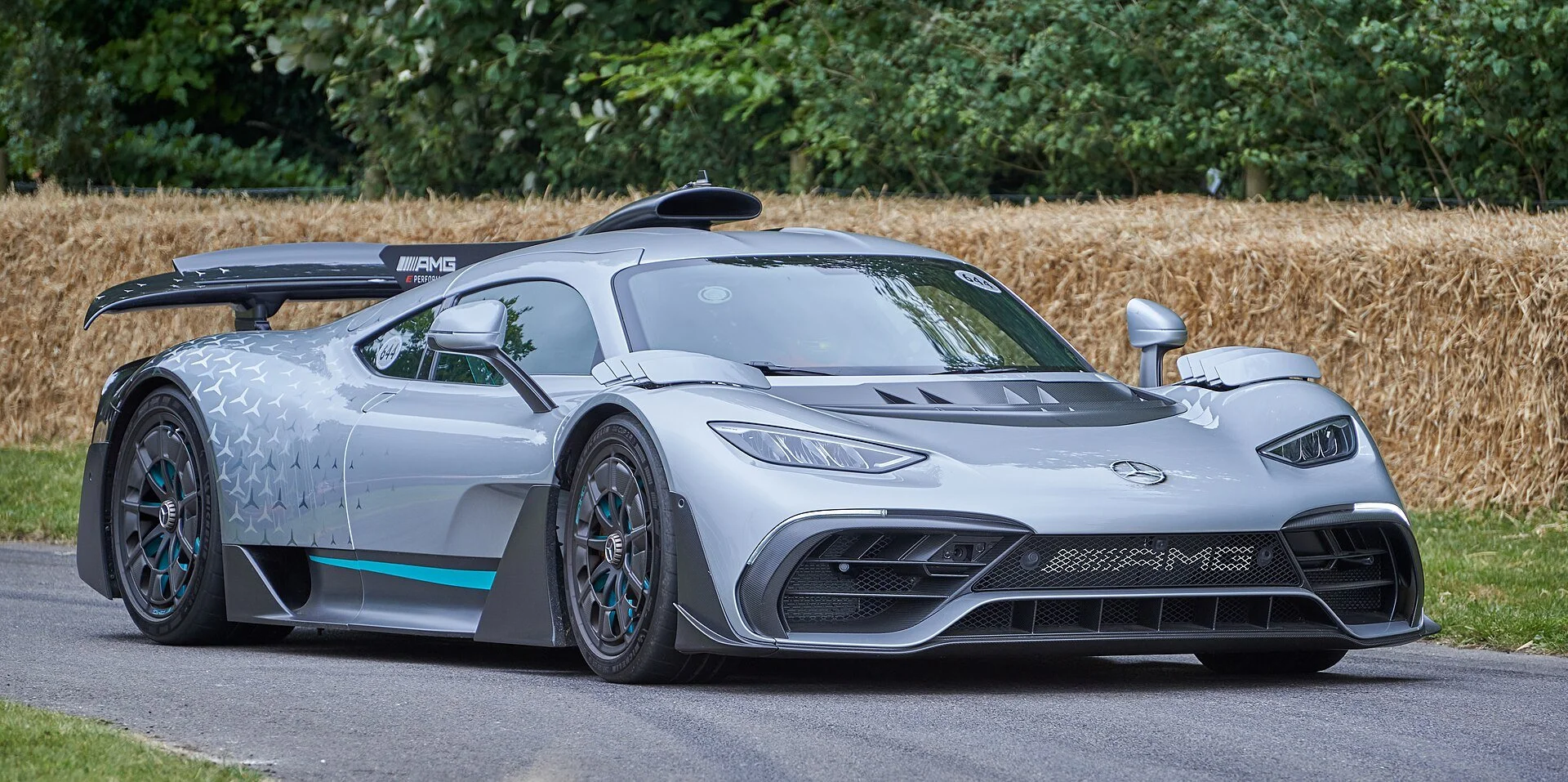Mercedes-AMG One: The Closest a Road Car Has Ever Come to Real Formula 1 Technology
Few cars in modern history have pushed the limits of what a road-legal machine can be. The Mercedes-AMG One doesn’t just challenge those limits—it demolishes them. Built around a genuine Formula 1 power unit and engineered with almost obsessive precision, the AMG One represents the closest any manufacturer has ever come to putting a championship-winning race car onto public roads. This is not marketing hype. This is Formula 1, adapted for reality.
1. Introduction: A Hypercar Built on Real Formula 1 DNA
Source: Youcar Youtube
The Mercedes-AMG One is not just another headline-grabbing hypercar. It is a rare case where a manufacturer genuinely brings top-tier motorsport technology into a road-legal package, without diluting the engineering principles that make Formula 1 powertrains so dominant. While many brands claim “race car for the road,” the AMG One is the only production road car in history that uses a power unit directly derived from an active Formula 1 program. This fact alone puts it in a separate category within the hypercar world and establishes a new reference point for what road-legal performance technology can achieve.
The origins of the AMG One go back to 2017, when Mercedes-AMG first revealed its intention to install the same 1.6-liter turbocharged V6 used in Lewis Hamilton’s championship-winning Formula 1 car into a street car. It sounded ambitious to the point of unrealistic, and early skepticism was justified. Formula 1 engines are built to run at extremely high rpm, to operate under intense thermal loads, and to follow strict warm-up and shut-down procedures that are entirely incompatible with everyday usability. Converting such a power unit to meet global emissions regulations, cold-start requirements and long-term reliability standards was a challenge no other brand had ever seriously attempted.
Mercedes-AMG pushed forward anyway, resulting in one of the longest development cycles in modern automotive history for a production hypercar. What emerged after years of engineering setbacks, software revisions, repeated emissions testing and mechanical redesigns is a vehicle that truly bridges the gap between motorsport and road use. The AMG One is not conceptually inspired by Formula 1; it is built around Formula 1 hardware. That distinction gives the car a technological purity that competitors simply cannot replicate.
The broader hypercar landscape places the AMG One in an interesting position. Unlike the all-electric Rimac Nevera or the twin-turbo V12 approach of the Aston Martin Valkyrie, Mercedes chose the most complex route possible: a downsized F1 combustion engine paired with four electric motors and high-density hybrid systems. With a total output of 1,063 horsepower, the AMG One does not rely on brute force alone. Instead, it focuses on efficiency, response and aerodynamic integration. Mercedes’ goal was never to chase meaningless top-speed numbers. The objective was to demonstrate what Formula 1 performance philosophy looks like in a street-legal environment.
The design reflects this mission. The overall shape clearly originates from function rather than aesthetics. The body follows aerodynamic necessity, and the proportions echo those of a prototype more than a traditional hypercar. Every intake, vent and surface curvature exists for a specific purpose. The AMG One is not beautiful in the classical sense, but it is undeniably purposeful. In this way, it stays faithful to the motorsport logic behind its engineering.
As the hypercar market evolves, the AMG One stands out as a technological outlier. It is a car built to prove a point: Formula 1 engineering can be adapted for public roads if a manufacturer is willing to invest enormous time, resources and expertise. Whether Mercedes or any other brand will ever attempt something similar again is uncertain, especially with increasingly strict global emissions and noise regulations. That makes the AMG One not only an impressive machine, but also a significant automotive milestone. It may ultimately represent the last true Formula 1 power unit ever sold for road use.
2. Powertrain Explained – How Mercedes Put an F1 Engine on the Street
The powertrain of the Mercedes-AMG One is the defining feature that separates it from every other hypercar ever built. At its core lies a 1.6-liter turbocharged V6 hybrid engine directly derived from Mercedes’ Formula 1 power unit used during the team’s dominant championship years. Unlike most manufacturers who use “F1-inspired” as a marketing term, AMG’s approach is literal. The combustion engine, the electric architecture, the turbo layout and the thermal management system originate from real motorsport hardware. Converting that technology into something capable of surviving road use was the largest engineering challenge of the project.
The biggest hurdle was rpm and durability. The original Formula 1 engine operates at over 15,000 rpm, but such a figure is completely incompatible with road regulations, fuel quality and longevity. For the AMG One, engineers limited the rev ceiling to 11,000 rpm, still far beyond what any other road-legal combustion engine currently reaches. Even with the reduced rpm, the unit required extensive reengineering, including a redesigned valve train, modified turbo geometry and new control electronics to meet emissions standards. The engine needs to be preheated before it can rev freely, a characteristic carried over from its Formula 1 origins.
Supporting the V6 are four electric motors that complete the hybrid system. Two of them power the front axle, each contributing 120 kW, enabling true torque vectoring and improving front-end bite in cornering. A third electric motor is integrated into the turbocharger, eliminating lag by keeping the compressor spinning independently of exhaust gases. The fourth sits between the V6 and the transmission, providing additional torque fill and energy recovery. Together, these components raise the system output to 1,063 horsepower.
Energy storage comes from an 8.4 kWh high-performance battery pack developed with the same cooling logic as the Formula 1 hybrid system. While the capacity may seem small compared to road-going plug-in hybrids, the focus is on power density rather than range. The battery’s liquid cooling system keeps each cell at an optimal temperature window, which allows repeated high-power deployment without significant performance drop. The AMG One can drive short distances purely electric, but this is a compliance feature, not the core philosophy of the powertrain.
The complexity of this hybrid system required a bespoke seven-speed automated manual gearbox. It is engineered to withstand extreme temperatures and instantaneous torque spikes from both the combustion engine and the electric motors. This transmission does not attempt to mimic the smoothness of a dual-clutch unit; instead, it prioritizes mechanical strength and motorsport-style responsiveness.
Thermal management is another critical element. Formula 1 engines operate with extremely narrow temperature tolerances, and translating that into a road car meant integrating multiple radiators, electric pumps, high-flow coolant circuits and exhaust heat shielding. The AMG One’s exhaust system, which includes a two-stage wastegate and a catalytic architecture specifically designed for the high-rpm combustion cycle, is the only reason this power unit passed WLTP emissions tests.
In total, the powertrain of the Mercedes-AMG One is less a conventional engine-and-motor combination and more a direct transfer of Formula 1 engineering into a form that barely fits within the boundaries of global road regulations. No competing hypercar—whether powered by V12 combustion, advanced hybrids or full-electric drivetrains—matches the mechanical complexity Mercedes successfully homologated. The AMG One’s powertrain remains one of the most technically ambitious and unlikely achievements in the history of road-legal performance cars.
Affiliate Disclosure
Mercedes AMG Petronas Racer Cap
Disclosure: Some of the links on this website are affiliate links. This means that if you click on one of these links and make a purchase, we may earn a small commission at no extra cost to you.
We only recommend products and services that we trust or that are directly relevant to our content. Affiliate earnings help us keep this platform independent and of high quality.
3. Aerodynamics & Chassis: Active Systems Designed for Maximum Lap Time
Source: Mercedes AMG Youtube
The Mercedes-AMG One is built around an aerodynamic and structural philosophy that mirrors top-level race cars more than traditional hypercars. The goal was not aesthetic drama or brand signature design cues. The objective was efficiency, stability and lap-time reduction. As a result, the AMG One’s bodywork is dominated by functional surfaces, active elements and motorsport-derived structural engineering. Every single component has a measurable purpose, and the car’s silhouette reflects that focus.
The aerodynamics system is fully active and highly complex. At the front, the car uses a series of automatically controlled louvers above the wheel arches. These open and close depending on driving mode, reducing lift and increasing downforce when required. Their operation is similar to what is found on Le Mans prototypes, and they allow the AMG One to maintain aerodynamic balance without relying on oversized splitters or static wings. The front end also includes deep channels that guide airflow toward the side intakes and floor tunnels, ensuring stable pressure distribution across the body.
A key visual element is the roof-mounted air intake that channels high-pressure airflow directly into the engine and hybrid cooling systems. This intake does not merely enhance the car’s presence; it serves a direct thermal function and helps maintain consistent power delivery at high speed. Integrated behind it is a vertical fin that stabilizes the car during fast directional changes, especially at high yaw angles. This fin originates from prototype racing aero concepts and minimizes turbulence around the rear wing.
Speaking of the rear, the AMG One features a two-stage, active rear wing. In standard mode, it remains flush to reduce drag. In performance-focused modes, it deploys upward and extends an additional flap to generate significant downforce. The system mimics the Drag Reduction System (DRS) concept used in Formula 1, allowing the car to switch between accelerated straight-line behavior and high-downforce cornering performance. Combined with the rear diffuser, the wing contributes to a balance of aerodynamic stability that few road cars can approach.
Underneath the car, the floor is designed to generate substantial ground effect. The tunnels, curvature transitions and venturi profiles are engineered to create low-pressure zones that pull the car toward the asphalt. This design is responsible for a major part of the AMG One’s track capability, enabling cornering forces that exceed what most road-legal tyres typically experience. Mercedes had to work closely with tyre suppliers to ensure the rubber could handle the loads produced by the aero package.
The chassis reflects the same motorsport philosophy. The monocoque is made entirely of lightweight carbon fiber, developed using similar layering and curing techniques as Mercedes’ Formula 1 tubs. This structure provides extreme torsional rigidity, allowing the suspension and aerodynamics to function with maximum precision. The suspension is a pushrod system using horizontally mounted coilovers, which reduces unsprung mass and provides consistent mechanical grip under high aerodynamic load. This configuration is unusual in road cars but standard in racing because it ensures maximum stability at elevated speeds.
Magnesium wheels further reduce unsprung weight while improving heat dissipation for the braking system. Behind them sit carbon-ceramic brakes capable of handling sustained track temperatures without fade. The steering is sharp by design, as the aerodynamic platform demands fast, precise inputs to fully exploit its capability.
In essence, the AMG One’s aerodynamics and chassis demonstrate how far a manufacturer can go when the primary focus is laptime and stability rather than design flourish or day-to-day comfort. The result is a car that behaves much closer to a prototype racer than to any conventional hypercar. It is engineered to extract performance from airflow, downforce and mechanical grip, and its capabilities only fully reveal themselves in environments where those elements can be pushed to their limits.
4. Performance & Driving Dynamics: What the AMG One Achieves on Track and Road
The Mercedes-AMG One is engineered with a singular purpose: to convert Formula 1 technology into usable, repeatable performance on both road and circuit. Its numbers are impressive, but they only tell part of the story. The true capability of the AMG One becomes clear when looking at how it deploys power, how it rotates through corners and how it translates downforce and hybrid torque into real-world speed. This car is not designed as a top-speed machine; it is built to dominate technical tracks.
Acceleration from a standstill is influenced more by traction than by raw power. With 1,063 horsepower delivered through a complex hybrid architecture and all-wheel drive, the AMG One reaches 100 km/h in around 2.9 seconds. It hits 200 km/h in approximately 7 seconds and continues to 300 km/h in well under 16 seconds. These figures place it firmly among the fastest combustion-hybrid hypercars on the market, although electric hypercars like the Rimac Nevera do beat it in straight-line sprints. Mercedes was aware of this and deliberately chose not to chase acceleration records. The focus is stability, consistency and cornering dominance.
The real benchmark achievement is the Nürburgring lap time. In 2022, the AMG One set a lap time of 6:35.183 on the full Nordschleife configuration, making it the fastest production road car ever to lap the circuit at the time. This is not an arbitrary statistic. The Nordschleife exposes every weakness a car can have: high-speed stability, mechanical grip, braking endurance and aerodynamic balance. The AMG One’s lap proved that its hybrid system, downforce platform and chassis integration behave like a prototype racer rather than a road car.
Cornering ability is where the AMG One distances itself from its competitors. The combination of active aerodynamics, pushrod suspension and advanced torque vectoring enables high entry speeds and exceptional mid-corner stability. The front axle’s independent electric motors contribute precise power modulation, allowing the car to pull itself into a corner rather than relying solely on rear propulsion. This results in a steering response that feels unnervingly direct for a road-legal vehicle.
The hybrid integration also plays a critical role in driving dynamics. The electric motors provide instant torque that fills gaps in the V6’s powerband, smoothing transitions and stabilizing weight transfer. On track, this means the car can accelerate earlier out of corners and maintain higher minimum speeds. On public roads, it means the car feels aggressive but not chaotic. It is demanding, but not unpredictable.
At high speeds, downforce becomes the dominant factor. In its maximum aero setting, the AMG One produces levels of downforce usually associated with GT racing machinery. This pressure on the chassis transforms how the car behaves during rapid direction changes. Stability remains high even at extreme velocities, and the suspension maintains consistent contact patches across all four tyres.
Top speed is electronically limited to 352 km/h. Mercedes did not prioritize a higher figure because pushing beyond this point would compromise cooling, aerodynamics and engine longevity. It is a conscious engineering decision rather than a performance limitation.
Overall, the AMG One’s performance profile shows a vehicle built for apex speed, stability and repeatable track capability, not for headline drag-race results. It is an uncompromising machine whose engineering is best understood when driven at the limit.
5. Ownership, Interior & Real-World Usability
Image: C&C Premiumcars Youtube
Owning a Mercedes-AMG One is not comparable to owning a conventional hypercar. It is closer to operating a low-volume race prototype with number plates. Everything about the experience — from start-up procedures to interior ergonomics and long-term maintenance — reflects the underlying Formula 1 technology. Anyone expecting daily usability or GT-level comfort will be disappointed. The AMG One is intentionally uncompromising, and Mercedes never pretended otherwise.
The start-up routine immediately sets the tone. The engine cannot simply be fired up cold. The hybrid system initiates an electronic sequence to warm specific fluids and components before the combustion engine is allowed to run at higher rpm. This warm-up behaviour is not a marketing gimmick; it is a technical necessity. The F1-derived V6 operates within very tight thermal tolerances. Ignoring those would damage the engine. As a result, owners must accept that this is not a “get in and drive off” vehicle. The AMG One demands preparation and patience.
Once inside, the interior reveals a strictly functional design. The carbon monocoque dictates the seating position, which is low, fixed and angled toward motorsport ergonomics rather than comfort. The seats are directly integrated into the tub and cannot be adjusted like in a normal road car. Instead, pedal box and steering column can be modified to fit the driver. This is typical in racing cars and rare in road-legal models. Visibility is limited, especially toward the rear, and the cockpit feels narrow due to the high sills and the aggressive safety structure.
The dashboard layout is minimalistic. Two digital displays manage driving modes, telemetry, hybrid information and navigation. The steering wheel mirrors the style of a Formula 1 wheel, with flat edges, rotary selectors, shift lights and mode controls. There is no substantial luxury equipment. Mercedes intentionally avoided unnecessary features that would add weight or complexity. Even storage space is practically nonexistent. The AMG One’s interior makes it clear: this is a performance tool, not a touring car.
Ride quality is firmer than most owners will expect. The pushrod suspension is tuned for stability under heavy aerodynamic load, not for comfort on uneven roads. At lower speeds and on imperfect surfaces, the AMG One can feel harsh and loud. The hybrid system helps reduce some vibration during electric-only operation in urban environments, but once the V6 engages, the experience becomes raw and mechanical. Sound insulation is minimal because it would interfere with cooling and increase weight.
Daily usability is, therefore, limited. The car can handle typical road conditions, but it does not excel in stop-and-go traffic, long highway journeys or city manoeuvring. The turning radius is tight, cabin heat can rise quickly in warm weather due to the cooling layout, and the aggressive aero components require careful parking. Owners must accept that the AMG One is designed to be operated regularly, but not driven casually.
Maintenance is another crucial aspect. Because of the engine’s origins and the complexity of the hybrid system, Mercedes-AMG requires specialist technicians for servicing. The intervals are shorter than typical hypercars, and the processes are far more thorough. The power unit may require periodic component replacements similar to race engines, and long-term ownership costs are substantially higher than, for example, a Bugatti Chiron or a Ferrari SF90. These are consequences of using motorsport technology rather than conventional production systems.
Despite these limitations, the driving experience itself is unmatched. When conditions allow the car to operate at proper temperatures and speeds, the AMG One delivers an engagement level beyond typical hypercars. Owners consistently report that the feedback, steering response and precision feel closer to a track prototype than a street car. This is where the AMG One reveals its true purpose: not convenience, not luxury, but mechanical purity.
In summary, the Mercedes-AMG One is not designed for everyday comfort or practicality. Its interior, behaviour and ownership demands reflect its Formula 1 DNA without compromise. Those who understand this will experience one of the most focused and authentic performance machines ever made. Those who expect ease of use will quickly realize that the AMG One is not built to adapt to the driver’s lifestyle — the driver must adapt to the car.
6. Rarity, Price Development & Collector Significance
The Mercedes-AMG One occupies a unique position in the collector market because it is not merely a limited-production hypercar. It represents the first and likely last time a manufacturer has homologated a genuine Formula 1 power unit for road use. This technical reality gives the AMG One a level of historical importance that goes beyond production numbers, resale values or short-term market demand. Its rarity is structural, not just numerical.
Production was capped at 275 units, and Mercedes confirmed early in development that no additional cars would ever be built. All units were allocated long before production began, mostly to existing AMG customers, long-time collectors, and high-profile clients with an established relationship to the brand. There was no open market phase where typical buyers could simply place an order. This exclusivity has kept the AMG One insulated from oversupply and speculative flipping patterns that affect other limited-series hypercars.
The original price at launch was approximately 2.75 million euros. For a car with this level of engineering complexity, the price was considered conservative. However, Mercedes deliberately adopted a strategy similar to Ford with the GT: vetting buyers to maintain brand control and discourage immediate resale. Despite these restrictions, the secondary market quickly demonstrated strong appreciation. Early unofficial listings and private offers often exceeded 4 million euros, and in rare cases approached 5 million, depending on specifications and delivery timing.
The car’s collector value is reinforced by its technological significance. The AMG One is the final expression of a hybrid era in Formula 1 that is now evolving toward different engine regulations. Future F1 powertrains will rely on different architectures, and environmental regulations make the homologation of race-derived combustion engines increasingly difficult. This positions the AMG One as a technological endpoint — a machine that cannot be replicated under future emissions and noise standards. Collectors place high value on such “end of an era” vehicles.
Another factor in market perception is the AMG One’s Nürburgring record. Setting the fastest lap for a production road car on the Nordschleife at the time of its release elevated the car from a technical curiosity to a benchmark performer. This achievement contributes directly to its desirability, especially among performance-oriented collectors who care less about speculative value and more about engineering credibility. The record serves as verifiable evidence that the AMG One delivers not just theory, but measurable superiority.
Service requirements also influence the collector narrative. The complexity of the Formula 1-derived engine means maintenance is specialized and expensive. While this makes ownership more demanding, it also reinforces exclusivity. Only a small number of service centers worldwide are qualified to maintain the car, creating a barrier that filters out casual buyers. For many collectors, this exclusivity of operation is a feature, not a drawback.
Long-term value prospects remain strong. Historically, cars that introduce groundbreaking technology — notably the McLaren F1, Porsche 959 and Ferrari F50 — evolve into blue-chip investments because of their technical importance and limited supply. The AMG One fits this pattern closely. Its blend of rarity, engineering difficulty, regulatory impossibility and motorsport authenticity positions it as a future cultural artifact rather than just a high-value vehicle. Current trends suggest the car will remain in the upper tier of collectible hypercars and may outperform more conventional limited-series models in long-term market appreciation.
Beyond financial value, the AMG One carries symbolic significance for Mercedes-AMG. It is the brand’s most ambitious engineering project and arguably the most extreme road car ever produced by a German manufacturer. For collectors who curate vehicles based on historical milestones, the AMG One represents the pinnacle of AMG’s technological capability and a defining chapter of the hybrid performance era.
In summary, the Mercedes-AMG One combines scarcity, technological uniqueness and documented performance achievement. These factors establish it as one of the most important collector cars of the 2020s and a hypercar whose value is driven not by hype, but by genuine engineering history.
Affiliate Disclosure
1/18 AMG ONE Die-cast Model Car
🏎️
1/18 AMG ONE Die-cast Model Car 🏎️
Disclosure: Some of the links on this website are affiliate links. This means that if you click on one of these links and make a purchase, we may earn a small commission at no extra cost to you.
We only recommend products and services that we trust or that are directly relevant to our content. Affiliate earnings help us keep this platform independent and of high quality.




